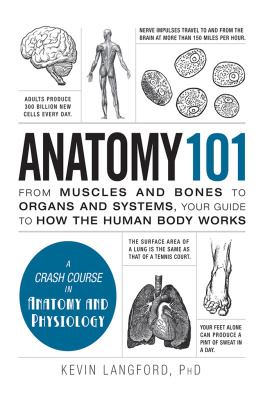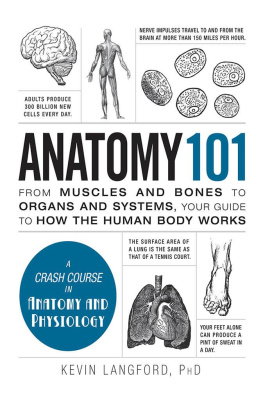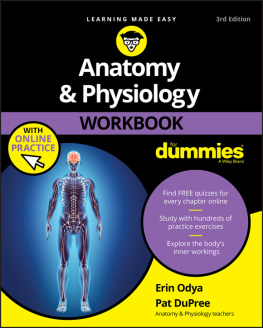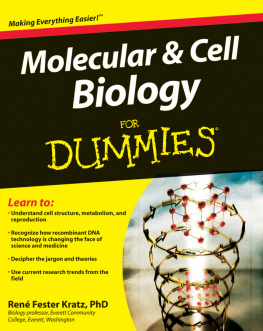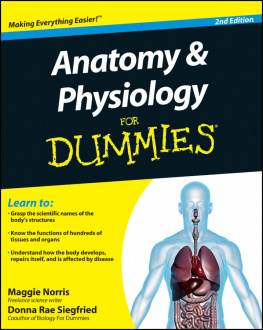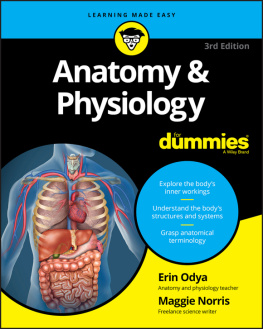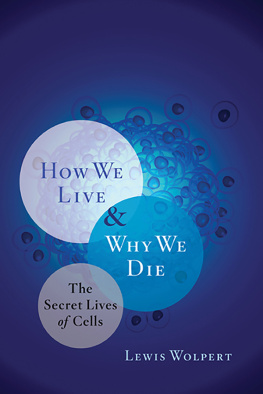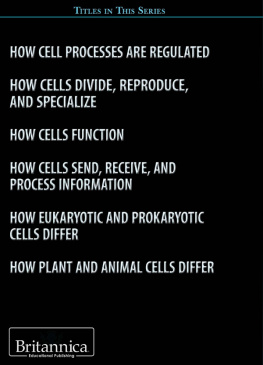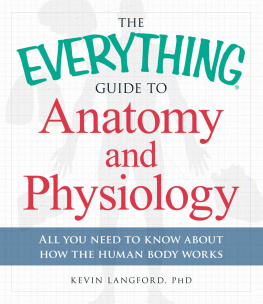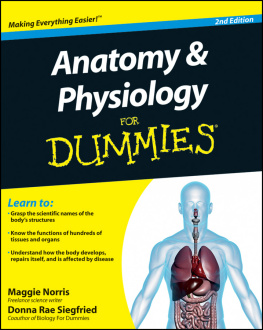Contents
Guide
ANATOMY 101
FROM MUSCLES AND BONES TO ORGANS AND SYSTEMS, YOUR GUIDE TO HOW THE HUMAN BODY WORKS
KEVIN LANGFORD, P H D

Avon, Massachusetts
CONTENTS
INTRODUCTION
THE BUILDING BLOCKS OF ANATOMY AND PHYSIOLOGY
The human body has always amazed mankind. Early scientific drawings and diagrams demonstrate the long-standing fascination with the body. Even cave drawings and later hieroglyphs illustrate that people were aware of the complex machinery of the human body. Our fascination continues to the present day, as we dig ever deeper into learning everything we can about the human body. Our understanding has advanced dramatically in just the last 20 years alone.
The study of the human body is divided into two different but closely related disciplines. Human anatomy is the study of the structure of the human body while physiology is the study of its function. Together, they help us understand how the human body works. In this book, you wont just learn the structure of the human body and the functions of its various parts, youll also discover why it does what it does.
Cells, tissues, and organs are often intricately arranged to facilitate many functions simultaneously; complex biochemical processes take place that enable your body to perform those functions. In Anatomy 101, all of these processes and structures of the human body are explained. After reading this book youll know the human body inside and out.
The amount of complexity can seem overwhelming when youre studying anatomy and physiology, especially at first, and particularly if you dont have a strong background in biology. Dont be intimidated! This book is designed for the reader who doesnt already have a PhD in biochemistry. Even if its been a few decades since high-school biology, with careful reading, youll be able to grasp the principles described in this book. By starting with a solid foundation, you will eventually master the intricacies of the human body. Dont forget that you already have a head start: you own a human body.
While it may seem obvious that the human body is made of organs and the structures that connect them to each other, this book doesnt start there, at the macro, big-picture level. It starts at the micro level, inside your very cells, with a description of the processes at work that help your bodys cells know what to do, when, and how. Well look at the biochemical basis of human lifethe organic and inorganic elements, compounds, and molecules that are necessary for the functioning of your body. Well look at how cells communicate and replicate. That will help create the solid foundation youll need to understand the rest of the material.
Once those building blocks are in place, well move on to a discussion of tissue, the foundation of all the organs in your body. Once this material is covered, well move on to the major systems in your body, including the skeletal, nervous, cardiovascular, and respiratory systems (among others).
For each system, common diseases and disorders are also described. Related material, such as how the senses integrate into the sensory system and the importance of nutrition to human health, are also covered.
Consider this book your one-stop information source for understanding the human body from cranium (head) to phalange (toe).
THE CHEMISTRY OF CELLS
Nuclear Reactions and Why We Love Them
Everything in the universefrom the largest of stars in the sky to the smallest grain of sand on the beachis made up of matter. To be more precise, everything that takes up space and has mass is made up of matter. That small grain of sand may not seem like it takes up any space or has any real mass, but wait until it gets in your shoe. Then youll know it as a physical object.
We might call matter physical substance (as opposed to that random thought you just had about whats for lunch; random thoughts have no physical essence).
The study of the structure of matter, its properties, and how different kinds of matter interact is called chemistry, and an understanding of basic chemistry is crucial to learning the principles of anatomy and physiology.
The interaction of atomswhich you probably know as the building blocks of matterhas created the human body and the world it inhabits. Atoms together form elements, a type of matter that cannot be broken down by chemical means (thats where the nuclear reaction comes inelements can only be changed by nuclear means). Various elements combine together to create cells, which are the smallest structural units in the human body that perform a function. For example, your blood cells carry oxygen throughout your body. They have a distinct structure from cells that perform other functions, such as nerve cells or muscle cells. Chemistry rules not only how these cells are structured but also how they perform their functions.
The Most Important Elements
Just as the human body doesnt have a single most important organ, several elements are essential for the creation of life. These are among the most important elements of all living things on earth:
- hydrogen (which is denoted by its chemical symbol, H)
- carbon (C)
- nitrogen (N)
- oxygen (O)
Whether in the air we breathe, the food we eat, or the materials that make up the physical structures of the human body, without these elements humanity would not exist. What makes these elements so essential to the formation of life is their ability to interact with other elements and then organize them into important molecules (matter that is composed of more than one atom) or compounds (molecules composed of two or more different elements). They can do this because of their subatomic structure and particles.
Anatomy of a Word
molecule
A molecule is a piece of matter consisting of more than one atom. A molecule can be made up of atoms that are all the same element (such as a molecule of oxygen) or it can be made up of different atoms, meaning that a molecule can be a compound (such as a molecule of water, which is a combination of hydrogen atoms and oxygen atoms).
Subatomic Particles
All atoms are made up of three basic subatomic (i.e., anything smaller than an atom) particles:
- protons (which have a positive electrical charge)
- neutrons (which have no charge)
- electrons (which carry a negative electrical charge)
The number and organization of these particles dictates whether an atom will readily interact with any other atomand also defines what type of atom it is. If an atom has only 1 proton, it must be a hydrogen atom.
Positively charged protons are found in the nucleus of the atom.
Where do atomic numbers come from?
The number of protons present in an atom is the atomic number for that element. For example, carbon has an atomic number of 6 and oxygen has an atomic number of 8, which means carbon has 6 protons and oxygen has 8 protons in the nucleus.
Another particle found in the nucleus of an atom is the neutron. While neutrons dont contribute any charge to the atom, they do contribute to the mass of the atom. Therefore, the atomic mass of an atom is the number of protons and neutrons present in the atom. So while carbon has an atomic number of 6 (6 protons), it has an atomic mass of 12 (which means there are also 6 neutrons in the nucleus).
However, while the nucleus is populated, there is an unequal charge for the atom. As with most things in the universe, atoms seek balance. To obtain this balance, atoms have negatively charged particles that orbit around the nucleus. These are called electrons. It is the electrostatic attraction between the electrons and the protons that keeps the electrons spinning in orbit around the nucleus, much like the moon is held close to the earth by gravity. In fact, to find a natural balance, atoms will have the same number of protons as electrons, leaving the atom with an overall net neutral charge.

